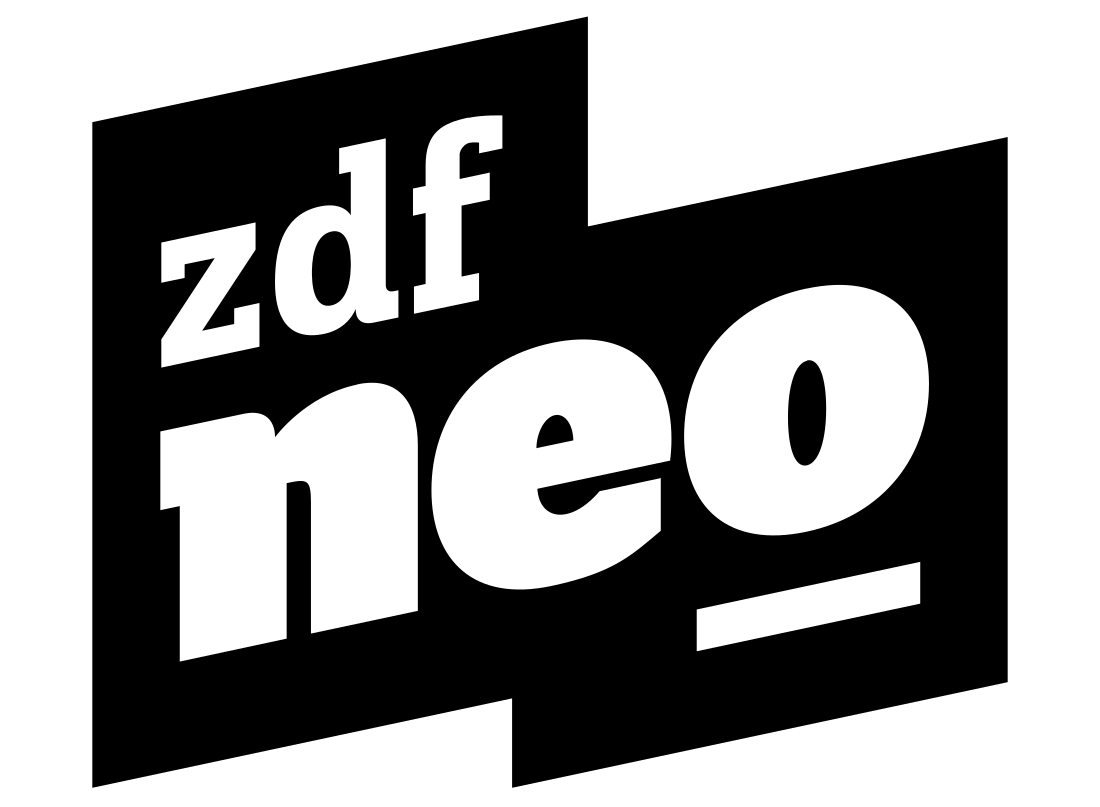Top Qs
Timeline
Chat
Perspective
ZDFneo
German free-to-air TV channel From Wikipedia, the free encyclopedia
Remove ads
ZDFneo is a German free-to-air television channel, programmed for an audience aged 25 to 49[1] to complement the primarily older-skewing main channels of public broadcasters ZDF and ARD. It replaced ZDF's documentary channel ZDFdokukanal on 1 November 2009.
This article has multiple issues. Please help improve it or discuss these issues on the talk page. (Learn how and when to remove these messages)
|
Remove ads
Remove ads
History
On 1 October 2017, the channel was to receive a new on-air design and a new broadcasting logo;[2] this was brought forward to 26 September 2017. The logo and on-air design was created by Julia David.[3]
Distribution
ZDFneo is broadcast (along with the rest of ZDFvision) via DVB-T digital terrestrial television, receivable in most areas of Germany. It is also transmitted in DVB-C through German cable networks, and in DVB-S from the Astra 1H satellite.
Since 30 April 2012, ZDFneo has been broadcast in HD (720p).[4] The channel was initially only scaled up by 576i, since ZDFneo had no HD-capable playout at this time. Since mid-May 2015, the channel is broadcast in native HD quality.
Remove ads
Programmes[5]
Summarize
Perspective
ZDFneo's broadcasts mostly consists of comedy and drama series produced in-house. Shows imported from America and the United Kingdom plus a few documentaries, music shows, and movies round out the schedule.
Repeats of ZDF programming
- Die Deutschen ("The Germans"; history)
- Alisa – Folge deinem Herzen ("Follow your heart"; soap opera)
- Bianca – Wege zum Glück ("The way to happiness"; soap opera)
- Der letzte Zeuge (2009–present)
- Lafer! Lichter! Lecker! ("Lafer, Lichter, delicious!"; talk, cooking)
- Terra X (history)
- Abenteuer Wissen ("Knowledge Adventure"; science, history)
- Neues aus der Anstalt ("News from the (mental) institution"; cabaret)
- Helen Dorn (2014–present)
- Heute Show (satire)
- Lena: Liebe meines Lebens ("Lena: Love of my Life"; soap opera)
- Neo Magazin Royale (late-night satire talk show; continuation of NeoMagazin mit Jan Böhmermann which was aired on ZDFneo)
Original programming
- Schulz & Böhmermann (talk show)
- Iss oder quizz (game show)
- Süper Tiger Show (comedy)
- neoMusik (music)
- neoLeben (living)
- Neo Magazin (Talk show)
- Der Straßenchor ("The Street Choir"; music)
- Hochzeitsfieber! ("Wedding Fever!"; living)
- Comedy Lab (comedy)
- Bambule (culture/current affairs)
Imported series
- 100 Code (2016-2017)
- 30 Rock (2009-2015)
- Agatha Raisin (2017–present)
- Being Erica (Being Erica - Alles auf Anfang) (2011)
- Candice Renoir (2016–present)
- Clan (2015)[6]
- Code 37 (2014)[7]
- Dawson's Creek (2011-2012)
- Death in Paradise (2012–present)
- Dicte (2014–present)
- Dirty Sexy Money (2011-2012)
- Endeavour (Der junge Inspektor Morse) (2017–present)
- Fargo (2016–present)
- Father Brown (2014–present)
- Free Agents (comedy; titled Free Agents – Zweisam einsam, engl. Free Agents – Twosome lonesome) (2010-2011)
- From Darkness (2017)
- George Gently (George Gently - Der Unbestechliche) (2011)
- Gidseltagningen (Countdown Copenhagen/Below the Surface) (2017–present)
- Hart to Hart (drama; titled Hart aber herzlich)
- Hooten & the Lady (2017–present)
- How Not to Live Your Life (comedy) (2010-2011)
- Huff (drama)
- Hustle (drama; titled Hustle – Unehrlich währt am längsten, engl. Hustle – Dishonest it works much longer )
- In Plain Sight (drama)
- In Treatment (drama)
- Jack Taylor (2015-2016, 2018–present)
- Line of Duty (2015–present)
- Luther (psychological crime drama)
- Mad Men (drama)
- Magic City (2013-2015)
- Magnum, P.I. (Magnum) (2011-2015)
- Miami Vice (drama)
- Midsomer Murders (detective drama; titled Inspector Barnaby)
- Mr Selfridge (2014-2016)
- New Tricks (New Tricks - Die Krimispezialisten) (2017–present)
- No Offence (2016–present)
- Orange Is the New Black (2017–present)
- Outcast (2017–present)
- Ray Donovan (2016–present)
- Safe House (2016–present)
- Scott & Bailey (2012–present)
- Seinfeld (2009-2012)
- Spooks (drama; titled Spooks – Im Visier des MI5, engl. Spooks – In sight of the MI5)
- Star Trek (Sci Fi; titled Raumschiff Enterprise, engl. Spaceship Enterprise)
- Taking the Flak (dramedy; titled Taking the Flak – Reporter auf Kriegsfuß, engl. Taking the Flak – Reporters at war)
- The Aliens (2016, 2018)
- The Big C (The Big C ... und jetzt ich!) (2011-2014)
- The Fades (2012-2014)
- The Fall (The Fall – Tod in Belfast) (2016-2017)
- The Fear (2012) (2014–present)
- The Inspector Lynley Mysteries (mystery)
- The Missing (2017–present)
- Wayward Pines (2017–present)
- Weeds (Weeds - Kleine Deals unter Nachbarn) (2010-2012)
Remove ads
Logos
- ZDFneo (2009–2017)
- ZDFneo HD (2012–2017)
- ZDFneo (since 26 September 2017)
Audience share
Germany
Remove ads
References
External links
Wikiwand - on
Seamless Wikipedia browsing. On steroids.
Remove ads


